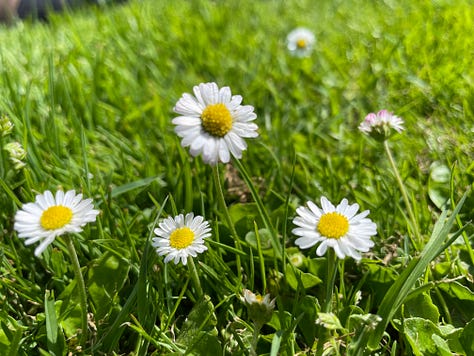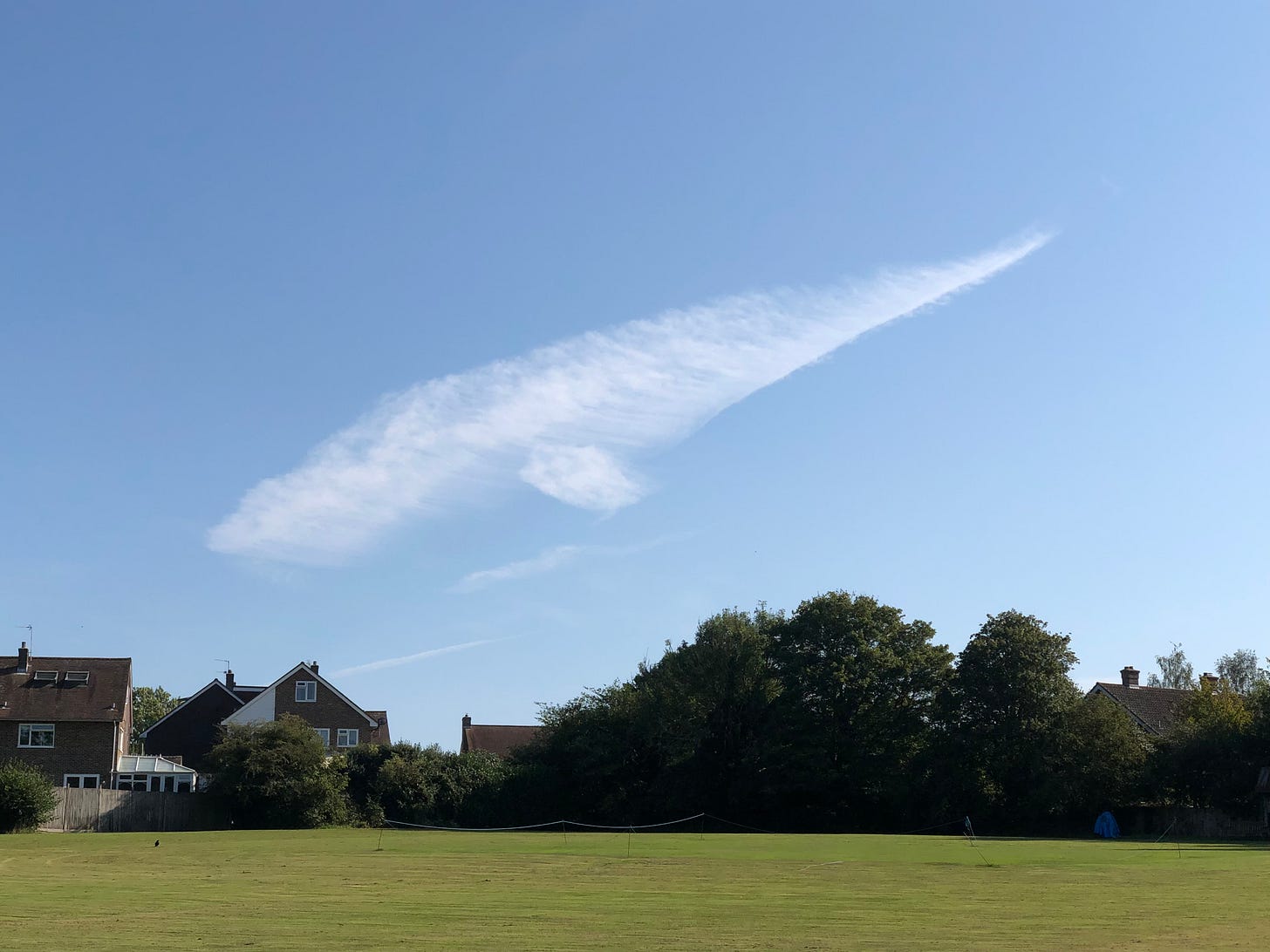In which Rebecca explores horizons close to home.
Dear Reader,
My horizons are rather closer than they used to be, but despite no longer striding out into the distance for entire days at a time I am nevertheless keen to exercise my adventurous spirit.
Until a couple of weeks ago I’d never heard the term ‘microadventure’. Where I found the word, in fact, surprised me: it was in this BBC News story about a woman and her thirteen-year-old son who have recently completed a 1,200 mile walk around the perimeter of Wales.
‘Doesn’t sound all that micro to me!’ I humphed.
It turns out that Kerry-Anne and Finn had started in ‘micro’ fashion. Inspired by the book Microadventures: Local Discoveries for Great Escapes by Alastair Humphreys, when Finn was only five he and his mum decided to sleep outside with just a bivvy bag for shelter for one night every month.
In January, they slept in the snow in their back garden, in the summer they would sleep in the forest or on beaches.
As Finn grew, so did their adventures. They tackled the Arran Coastal Way when he was ten, walked the daunting 630-mile South West Coast Path when he was twelve, and took on those even more impressive 1,200 miles around the coastline and land border of Wales the year after that.
I wanted to learn more about the concept of microadventures, and when my copy of Humphreys’ book, first published in 2014, arrived last week, I immediately sought out the writer’s definition for the term microadventure.
Adventure is stretching yourself mentally, physically or culturally. It is about doing something you do not normally do, pushing yourself hard and doing it to the best of your ability. You do not need to be an elite athlete, expertly trained or rich to have an adventure.
A microadventure is an adventure that is close to home: cheap, simple, short and yet very effective. It still captures the essence of big adventures, the challenge, the fun, the escapism, the learning experiences and the excitement.
Taken from Microadventures: Local Discoveries for Great Escapes by Alastair Humphreys, published 2014 by William Collins
Reader, for my own microadventures I’m thinking very small. I’m not planning on walking even two miles just at the moment, never mind over a thousand, like Kerry-Anne and Finn, but the idea of getting outside and embarking on absolutely tiny small-scale expeditions is very appealing.
When
of asked me to lead the first Wonder Walk of Camp AweGust, I homed in on a location on my doorstep and focused on the little things in front of me.I walked – but only a few paces. I very non-energetically sat and soaked up my surroundings. I became fascinated by a small patch of daisies, so I took out my notebook and pencil and wrote down some thoughts; picked up some artists’ pencils and recorded the colours around me. An ant came along and distracted me: I followed its trail on a page of my notebook. Soon I was absorbed in drawing the tiny flowers which had first caught my eye.



Was that a kind of microadventure, before I’d even stumbled across the term? I rather think it was.
I view the walk described by writer
of in her recent post The power of trees as a microadventure. After breaking her shoulder, Helen found herself having to walk to the hospital for many appointments, and her route followed a beech-lined path.I noticed this feeling of relaxation every time I entered the path and found it very comforting.
Humphreys’ book contains many suggestions for microadventures, including building a wild hut, walking every street in your town or city, and the ‘bivvy challenge’, which is how Kerry-Anne and Finn started their adventuring. It goes way further than that, though: a beautifully-written chapter entitled A Journey to the end of my country (Difficulty Level: Hard; Means of Transport: Bike and packraft) describes a trip which, although deeply impressive, doesn’t make it onto my own rather less energetic shortlist of things to tackle. Neither, in fact, does An M25 adventure, in which Humphreys describes walking a lap of the M25 motorway with a friend (Difficulty Level: Hard; Time Required: One Week). They didn’t walk the motorway itself, of course, but chose paths located as close to it as possible.
We had a week available to complete the journey and we carried just one small-scale map of the whole motorway. You don’t really need more than that when you are just planning to follow your nose alongside a massive road.
Alastair Humphreys
To my relief not all of Humphreys’ suggestions are this ambitious. Sleeping in my back garden one (warm, dry, summer) night appeals to me, as does the suggestion to head to a Dark Sky area to reacquaint myself with how impressive a sky filled with stars is. With late-August rain pelting down and soaking the garden as I’m writing this (thanks, Storm Lilian) I have no plans to eat outside this evening, but I rather like Humphreys’ idea of eating dinner in the garden on a cold winter’s night much later in the year.
Yesterday I found myself on what I like to call a cloud safari, and I’m counting that as a microadventure. It was a sunny evening and I decided to walk down to the studio to collect Jim from work as a surprise. I love to find shapes in the clouds, and last summer I was thrilled to see this whale diving towards the recreation ground:
Yesterday’s sky offered only contrails, not wildlife, but I know that this beautiful kiss right above the studio had been left there just for me:
Humphreys’ Calendar of the microadventure year towards the end of the book is intended to ‘help you concoct seasonal microadventures of your own’, and these are two of the entries for September:
Sea is at its warmest for swimming
Swallows start to migrate south
So, what will my next microadventure involve? Like those September swallows I’d like to head south to my favourite seaside spot, although I’ll be going in the van rather than taking to the skies. At the beach I’ll collect a handful of pebbles on my gentle walk towards the surf, stop for a moment to roll up my trousers and then paddle into the shallows. I’ll let the pebbles slip from my hands and watch them turn to jewels before the retreating waves pull them, glinting, into deeper water.
And might the sea be warm enough for swimming? Perhaps I’ll see.
Love,
Rebecca
📚 What’s next? 📚
📚 I publish my Art & Treasures 🖼️ posts on the last Saturday of every month. Next weekend, my fingers stained with blueberry juice, I’ll be telling you about a recent trip to a pick-your-own farm.
📚 Regular readers of ‘Dear Reader, I’m Lost' will be no strangers to my ongoing light-hearted correspondence with fellow Brit Terry Freedman of Eclecticism: Reflections on literature, writing and life. It’s his turn to reply to me next Wednesday!
If you’ve enjoyed this post, please let me know by clicking the heart. Thank you.
And thank you for reading! If you enjoy ‘Dear Reader, I’m lost’, please share and subscribe for free.









One of the first Tintin adventures I read was The Castafiore Emerald, and it is completely set in Marlinspike with no excursions or international journeys. Reading that, I understood at quite a young age that an adventure doesn't need to be grand, all you need is a mind full of wonder and a heart that's capable of delight!
All the best for your next microadventure and keep one of those pebbles in your pocket to take home as a memento.
Thanks for this lovely post Rebecca.
I love the micro-adventure concept - we call them "'splores" (for "explores", a word I learned from my Jim, origin unknown unless it's his) and I also love the sky whale and I printed out your Camp Awegust steps for observing what's "ten steps towards the sun" to do today. The sense of adventure is just a heartbeat away, the smallest thing/idea/destination close to home makes my insides at the ready to feel the wonder of what might be and what I might learn . . . Great post, RH! P.S. As always, love your art!